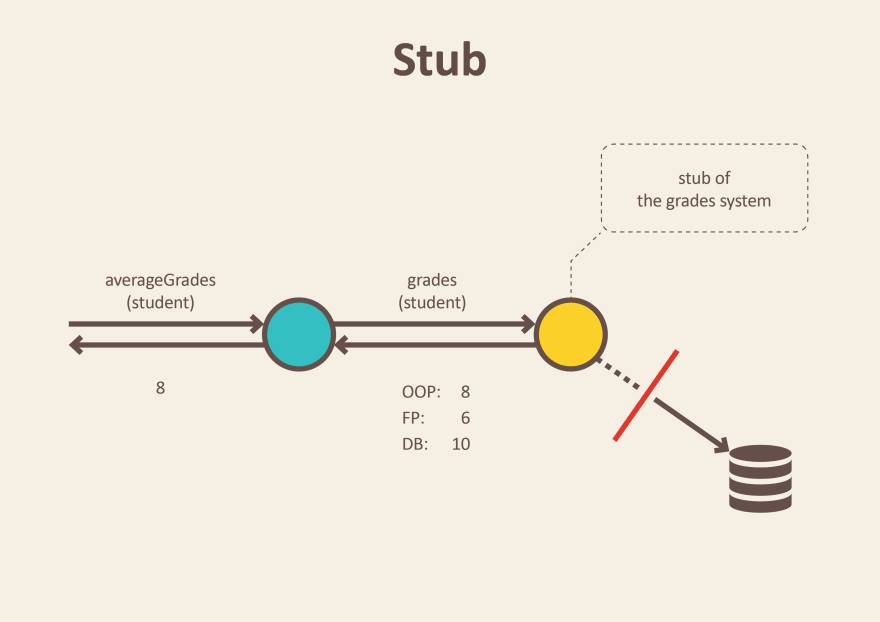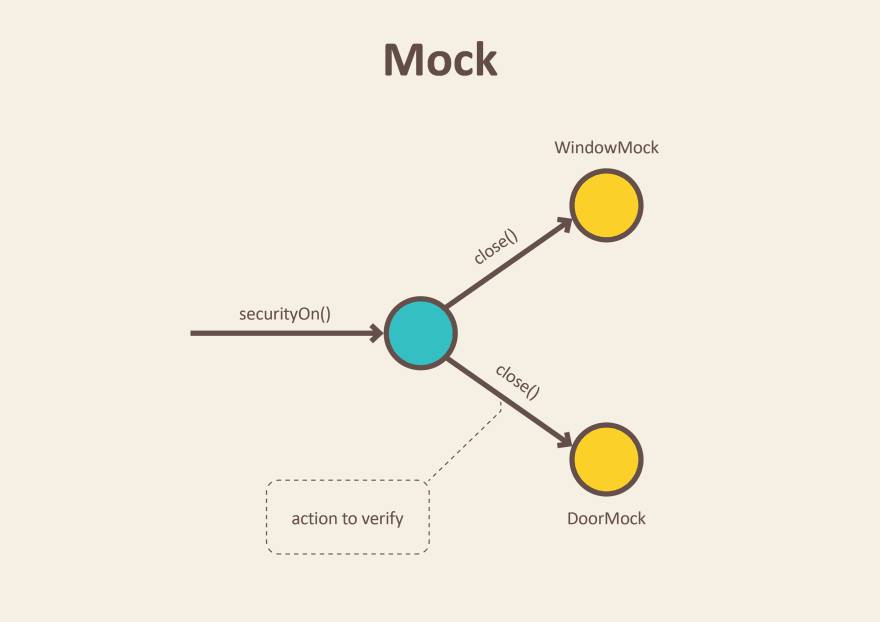原本放在 RSpec,但是越寫越多,就把它獨立成一篇
Double
RSpec 裡面叫做 double(替身),目的是用來建立替身(假物件)
1 2 3 4 5 6 7 | |
Partial Test Doubles
設定 class method return value
1 2 3 4 5 6 7 8 | |
Null object doubles
使用 as_null_object,確保執行未知的 method 不會出錯誤並回傳自己
1 2 3 4 5 6 7 8 | |
Spies
TBD
Scope
TBD
Stubs
Stub 「不管邏輯、過程,只要建立假 method 並回傳資料或狀態」
Stub 手法用在要驗證 「回傳值」 或驗證 「狀態改變時」
rspec 3 之後改用 #allow 取代 #stub
 (source: test-doubles—fakes-mocks-and-stubs)
(source: test-doubles—fakes-mocks-and-stubs)
Stubs 不管 #list_student_names 中間執行哪些動作,只管最後回傳結果
1 2 3 4 5 6 7 8 9 10 11 12 13 14 15 16 17 18 | |
Mocks
Mock 「模擬一物件有相同的介面,測試一個 「會收到指定訊息」 的期望,去驗證互動是否真的有發生」
Mock 的手法用在互動並取得預期結果
使用double 建立替身,產生互動過程,提供預期結果
 (source: test-doubles—fakes-mocks-and-stubs)
(source: test-doubles—fakes-mocks-and-stubs)
範例:
實作 class ClassRoom
1 2 3 4 5 6 7 8 9 10 11 12 13 14 15 | |
使用 double 建立假物件
1 2 3 4 5 6 7 8 9 | |
Mocks vs. Stubs
Behavioral testing vs State testing
補充:Types of test double
The term “test double” is used to refer to a range of testing techniques, with the common theme that a substitute object is provided to the subject under test, taking the place of the objects it will communicate with in actual use.
- Dummy – a pure placeholder object with no behaviour (it doesn’t respond to any messages). This is used when a method requires an argument but doesn’t interact with it in a specific test. Fake – a replacement object with real behaviour, but taking shortcuts that are helpful for testing purposes (a good example is using an in-memory database for faster testing of database-dependent code).
- Stub – an object providing canned responses to specified messages.
- Mock – an object that is given a specification of the messages that it must receive (or not receive) during the test if the test is to pass.
- Spy – an object that records all messages it receives (assuming it is allowed to respond to them), allowing the messages it should have received to be asserted at the end of a test.